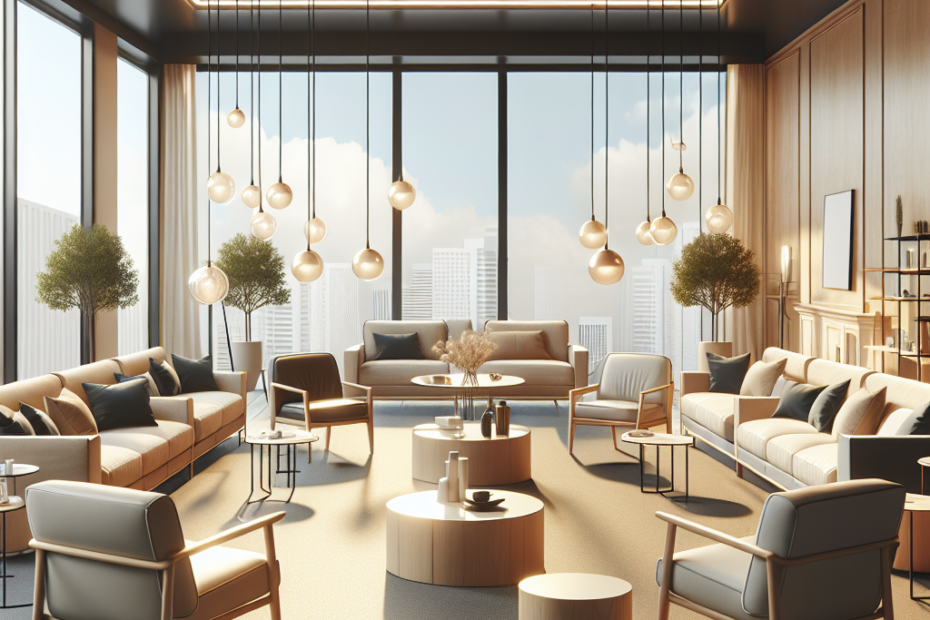“`html
Creating the perfect Social Space Furniture Layout is essential for every home or community area that seeks to foster engagement and interaction. Whether it is a living room, a community center, or an office break room, the way furniture is arranged can significantly influence how people connect and communicate.
When they first enter a room, people instinctively assess layout and atmosphere. A well-organized social space invites interaction, whereas a poorly designed one can result in discomfort or disengagement. In fact, according to a Statista survey, 67% of Americans believe that furniture layout impacts their mood and level of interaction.
The Principles of Social Space Furniture Layout
To achieve an optimal arrangement, they must consider several factors including space size, shape, and purpose. Here are some guiding principles:
1. Define the Purpose
Before arranging furniture, it is crucial to understand the desired purpose of the space. Are they designing for casual conversations, entertainment, or meetings? The function will largely dictate whether they need to emphasize comfort, accessibility, or technology integration.
2. Consider Mobility and Flow
A functional social space allows for easy movement. There should be clear pathways within the room, without impediments. This ensures that participants are comfortable as they move around and interact. Stats suggest that up to 50% more social interactions happen in environments where furniture is arranged to facilitate flow (iDesign Study).
3. Create a Focal Point
A focal point naturally draws people in and creates a sense of unity. This could be a fireplace, a piece of art, or a central coffee table. Such elements can spark conversation and make the room feel cohesive. Optimally placed furniture should enhance and direct attention to this focal point, encouraging geometry that invites participative sitting such as circles or semi-circles.
4. Ensure Comfort
Comfort cannot be overlooked. They should select furniture that is not only aesthetically pleasing but also functional and supportive. Cushioned seating and ergonomic chairs are ideal. To suit varied preferences, consider a mix of soft and firm seating options.
Furniture Arrangement Styles for Different Social Spaces
The type and size of the space have a strong influence on how to lay out furniture. Here’s how they might approach different settings:
| Space Type | Furniture Arrangement Style |
|---|---|
| Living Room | Use a circular arrangement with the central point being a coffee table or a rug. This enhances group discussions. |
| Office Break Room | Cluster seating arrangements with partitioned spaces to allow for small group conversations and individual quiet time. |
| Community Center | Implement modular furniture that can be easily reconfigured to suit different events, ensuring flexibility. |
Living Room
The living room is often the heart of a home. To enhance social interaction, they should consider creating circular seating where everyone can see each other without obstructions. Adding more focused lighting like lamps can also promote a welcoming atmosphere.
Office Break Room
Break rooms should be an escape from the work desk environment. Incorporating multi-functional furniture that can accommodate solo relaxation and group gatherings can maximize usage. Emphasis on color and liveliness can enhance the mood, fostering positive interactions.
Community Center
Versatility is key in community centers as they accommodate a wide array of activities. Modular furniture and adaptable layouts offer the flexibility needed to host various events from formal to casual setups. It’s important they consider storage options as well, to maintain tidiness when transitioning between functions.
Key Takeaways
- The overall arrangement should prioritize the purpose of the space, whether it’s for relaxation or active meetings.
- Easy mobility and flow contribute to increased social interactions.
- A focal point can enhance group cohesion and conversation.
- Comfortable, supportive, and versatile furniture is essential for long-term engagement.
FAQ
Q1: What is the most crucial factor in arranging furniture for a social space?
A1: Understanding the purpose of the space is crucial as it dictates the kind of furniture used and its configuration, whether for relaxation or active meetings.
Q2: How does a focal point impact a social space?
A2: A focal point helps create unity within the space and directs attention, encouraging more cohesive and engaged interactions.
Q3: Why is mobility important in a social space furniture layout?
A3: Ensuring clear pathways prevents congestion, allowing people to move freely, which enhances comfort and the likelihood of interactions.
Q4: How can they ensure comfort in their social spaces?
A4: They should opt for a variety of seating options to cater to different comfort levels, using ergonomically designed chairs and cushioned seating.
Q5: What furniture arrangement is best for a community center?
A5: Community centers benefit from modular furniture systems allowing flexibility to accommodate different events and activities efficiently.
In conclusion, optimizing a social space through strategic furniture arrangement focuses not only on aesthetics but on encouraging interpersonal connections and comfort in a dynamic atmosphere. With these guidelines, they can easily create spaces that invite engagement and conversation, aligning with the fundamental principles of human-centered design.
“`
